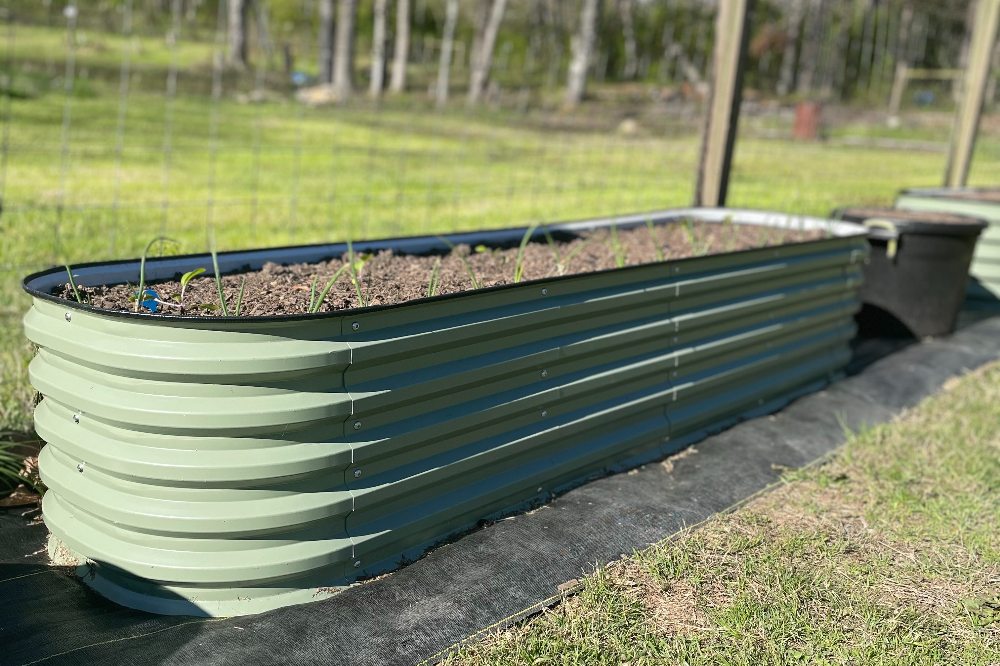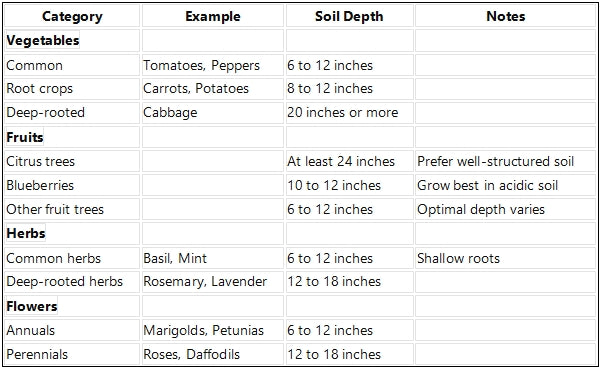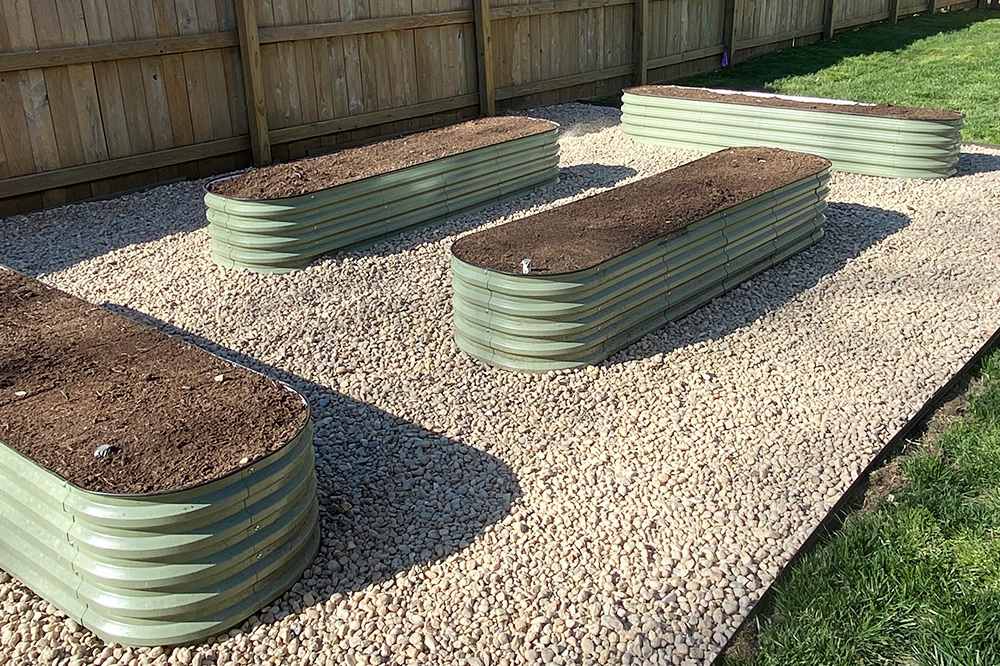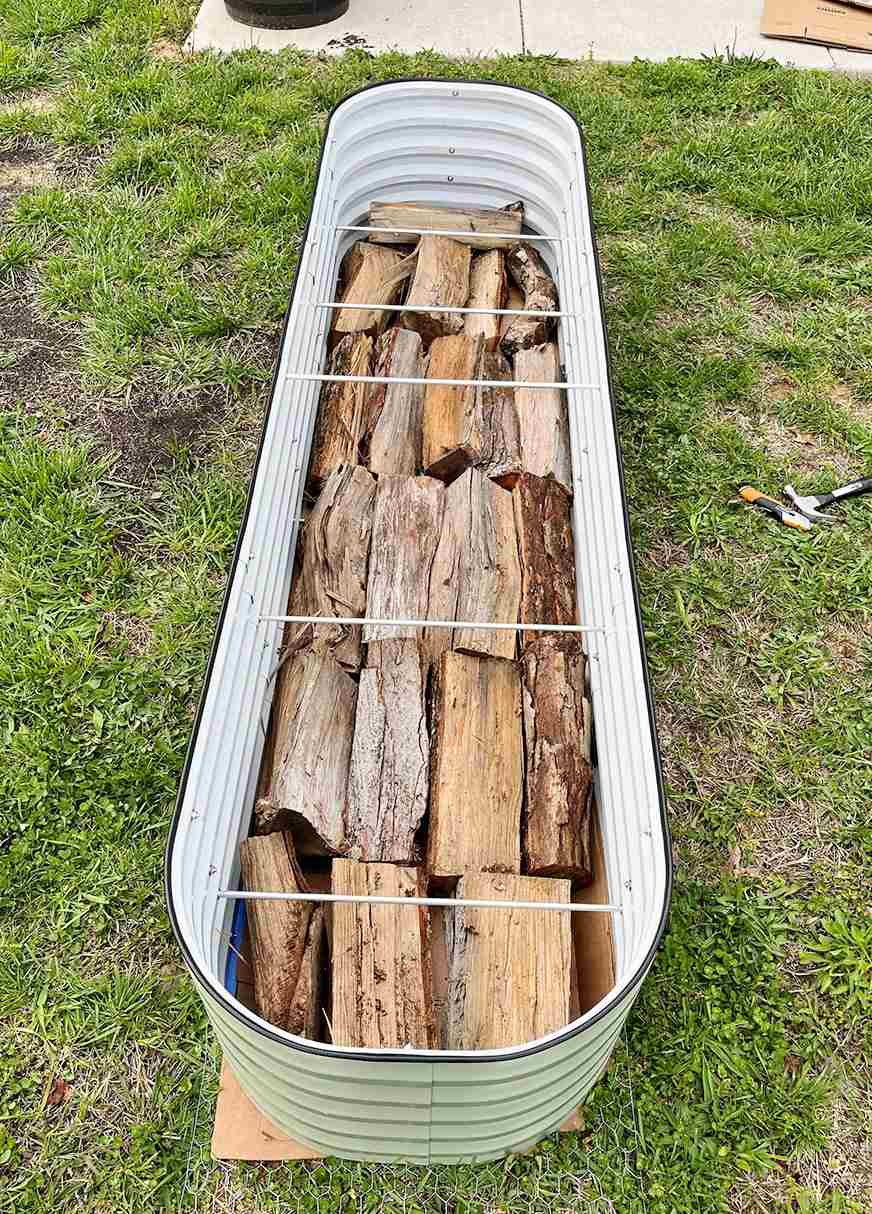How Much Soil to Fill a 2x8 Raised Garden Bed
Hello there, fellow gardeners!
If you’re looking to create to start a new garden, you know that raised garden beds are a great way to go, and what better way to start then using corrugated metal raised ones!
The first question once you’re ready to start is asking yourself the question “How much soil am I going to need?”
Let’s take a closer look.
Understanding The Dimensions
To even begin figuring out the amount of soil you need, you need to first understand the dimensions of the raised garden bed. In this case, it’s 8x2 (that’s 8 feet in length by 2 feet in width). Now the depth can vary wildly, but for the sake of simplicity, let’s stick to 10 inches.

Why does depth matter so much?
The depth of your soil matters for two reasons: it determines how much soil you’ll need and will directly affect the well-being of your plants.
The depth of your raised bed is like the foundation of a house for your plants.
Think of it as giving your plants the room they need to stretch their roots, soak up all the good stuff from the soil, and build a strong base. A generous depth means roots can wander, find nutrients, and give your plants the stability they crave.
But go too shallow, and you're putting your plants in a tight spot – literally. Limited root space can mean weaker plants and less to harvest. Here's the scoop on why depth really matters:
- Nutrient Availability: Deeper soil isn't just more room; it's more room packed with nutrients, organic matter, and those tiny but mighty microorganisms that make your soil rich and fertile.
- Water Retention: Just right depth keeps water in the soil where it belongs – hydrating your plants without drowning them.
- Stability: Ever seen a top-heavy plant take a tumble? Adequate depth keeps them anchored and upright.
- Temperature Regulation: Deeper soil acts like a cozy blanket, keeping temperature swings from stressing your plants.
Calculating Soil Volume
Figuring out the amount of soil you need is straightforward. It’s simply length x width x height.

Step 1: Understand Your Rasied Bed Dimensions
We're working with an 2x8 feet raised garden bed. That's our length and width sorted.
Step 2: Convert Depth To Feet
Now, our depth is a bit different – it's in inches. But no worries, a quick conversion is all we need. 10 inches is roughly 0.83 feet. Remember, there are 12 inches in a foot, so just divide your inches by 12 to get your depth in feet.
Step 3: Plug Into the Formula
With all our numbers ready, let's do the math: 8 (Length) x 2 (Width) x 0.83 (Height/Depth).
Step 4: Calculate
And there you have it, 13.28 cubic feet of soil is what you'll need for your garden bed.
Note: Remember that the result we got was for a bed with a depth of 10 inches. Changing the depth will affect the total volume.
How Deep Should My Soil Be in the Garden Beds?
The best soil depth to use will vary depending on the plants and vegetables you are working with.
Most vegetables and flowering plants flourish with a soil depth of 6 to 12 inches. But some deep-rooting vegetables like carrots or potatoes will thank you for a deeper bed!
Here is a general table to help you decide the minimum soil depth based on plant types:

Soil Type And Mix for the Raised Garden Bed
From my own journey through the garden and soil beds, I've learned that soil type and quality are like the heartbeat of your garden. Imagine trying to fill a raised bed with dense clay soil - it's like lifting weights compared to the lighter, more forgiving embrace of fluffy compost.
It's fascinating to note that while those bags of topsoil or compost you pick up from the store tip the scales at around 40 lbs per cubic foot, the compost you've nurtured at home might be a featherweight in comparison. Let's dig deeper into this:
Soil Types
- Topsoil: The go-to for many gardeners, topsoil has a bit of heft to it due to its rich mineral makeup.
- Potting Mix: This is your garden's lightweight champion. Perfect for containers and raised beds, it's a mix of peat moss, vermiculite, and perlite that ensures good drainage.
- Compost: The heart of any garden, compost is lighter than topsoil but is bursting with nutrients and helps create a fantastic soil structure. It'll also feed your plants as it decomposes overtime.
Crafting The Perfect Soil Mix for Raised Garden Beds
Aim for a balance - that's my mantra. We're talking good water retention, efficient drainage, and plenty of nutrients. Over the years, I've stuck to a classic, simple mix that never fails. You've may have heard this across gardening circles as I have. It's the classic 3-ingrediant soil mix.
- 1/3 Peat Moss: This stuff is fantastic for moisture retention and keeping the soil nice and aerated.
- 1/3 Vermiculite: It's all about enhancing drainage here, making sure our plants aren't drowning.
- 1/3 Compost: This is where the magic happens. Nutrients galore and a hotbed for beneficial microorganisms.

This mix works very well together. It balances water retentions, maximised nutrient availability and improves aeration.
As a side note, be sure to diversify your compost sources. Using different types of compost ensures your soil will be enriched by a variety of different nutrients and microbes.
Interesting Tidbits
- Peat Moss: Peat Moss is slightly acidic, which can be great for acid loving plants. If you’re growing vegetables and other plants that prefer a more neutral or alkaline pH, consider adding some garden lime.
- Vermiculite: Vermiculite is amazing at holding onto water and nutrients, slowly releasing them back to the plant roots.
- Compost: When it comes to Compost, stick to the basics and be diverse. Kitchen scraps, yard waste, worm castings - you name it.
Soil Weight
The mix you choose can vary in weight, influenced by its components. Here's a rough guide:
- Topsoil: Is the heaviest and typically weighs around 75 to 100 pounds per cubic foot.
- Potting Mix: Is lighter and clocks in at 40 to 60 pounds per cubic foot.
- Compost: The lightest of them all and is about 30 to 50 pounds per cubic foot.
Keep in mind these numbers can shift depending on the brand and how much moisture your soil holds. Tailor your soil mix to suit your garden's needs and the whims of local weather.
Estimating the Total Quantity

As we've crunched the numbers, you're looking at 13.28 cubic feet of soil if your raised garden bed is 10 inches in depth.
If you're mixing your own soil with the classic three-ingredient blend, you'll be dividing that total equally among peat moss, vermiculite, and compost, rounding up to 4.43 cubic feet of each.
Now, when it comes to getting your hands on that soil, you've got a couple of paths you can take: bulk soil or bagged soil. Each has its perks and things to ponder:
Bulk Soil:
Advantages
- Cost-effective: Because there’s a lot of it, bulk soil is more budget friendly.
- Eco-friendly: You’ll cut down on plastic waste as less packaging is used.
Disadvantages
- Transportation: In order to move bulk soil, you’ll need the proper vehicle. A truck or trailer is usually sufficient as you’ll likely be moving pallets.
- Delivery: Some suppliers might be able to deliver straight to you. It's worth asking!
Bagged Soil:
Advantages
- Convenience: It's easy to handle and doesn’t require heavy lifting equipment.
- Storage: No rush? Store the bags until you’re ready to use them.
Disadvantages
- Cost: Per cubic foot, it can be pricier.
- Environmental impact: Think about how you can reuse or recycle the bags to keep our planet green.
Choosing to buy soil in bulk or individual bags depends on your unique situation. Consider bulk soil if you are able to transport it and use it as soon as it arrives. If you’re working on a smaller scale, and want to save the soil for later use, bagged might be the best way to go. Also read about Which Soil Is Better for Plants: Acidic soil or Alkaline Soil.
By John
Author bio: A DIY enthusiast, John loves everything about gardening, especially mulch! His love for all things mulch inspired him to share this knowledge with others by founding mulchuniverse.com. Here, he shares his hands-on experience and passion with likeminded readers.



My understanding is (and I’m not an expert, but I did stay at a Holiday Inn Express last night), if the planter is higher than the plants need, the bottom can be filled with logs and “clean” yard waste, like leaves and grass clippings. These will compost over time, and can save considerable money, especially if you’ve got the materials anyway. Just bear in mind that some things will compress more than you probably think they will. And I’d probably check to make sure that the leaves I’m using aren’t from something weird that would mess up the pH of the soil.
Please explain the wood logs in the photo of the planter. What other alternatives are there to fill the bottom of a 17" planter, assuming a target of 10-12" planting soil? Can green and dry garden clippings be used as bottom filler?
Are there any issues planting long term smaller evergreens that may eventually get to 4’ H X 3’ w? I was thinking of using the 8′ × 2′ for about 4 evergreens.